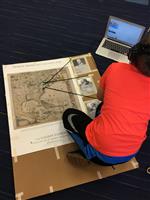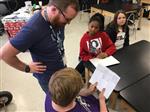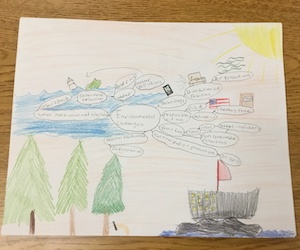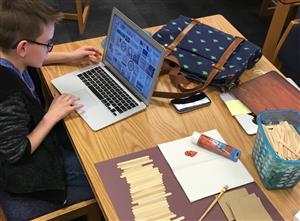Unit Design

Expand the sections below to read about unit concepts, learner-generated questions, research component, Making to show learning, and evaluation. Additional resources, scaffolds, and templates can be found on the Materials and Resources page.
UNIT CONCEPT
A strong unit concept - a big idea or abstract principle that is timeless and universal - is critical for a successful inquiry and Making experience. Informed by the established academic content standards and the National School Library Standards for School Libraries, School Librarians, and Learners, this concept allows learners to connect the content and personal interests. Unlike a unit topic - a category or subject area - a concept broadens the range of learner questioning and helps learners understand the larger significance of the standards. Concepts are usually addressed in one word or a short phrase.
Learner-generated Questions

An important aspect of GID + Making is student-generated questions. When developing a unit the learning team intentionally designs context-building experiences to stimulate interest and engage students with the content. This gives students the foundation needed to develop high-level inquiry questions. These questions are open-ended and unique to each student. Student-generated questions are critical to the process because they allow students to connect content to their own interest and attain ownership of their learning.
When the learning team empowers students to take control of their learning by generating their own questions, knowledge gaps may form. Therefore, it is important that learners share with each other to develop a common understanding of the concept.
Research Component

After learners have developed their inquiry questions, they conduct research to answer them. The learning team collaborates to teach research strategies, monitor progress, and guide students through the research process. The level of guidance will vary with different grade levels and content areas. Research is ongoing - students will discover knowledge gaps as they move through the inquiry process. Learner research bridges the gap between the inquiry question and the finished Maker product.
In inquiry and Making units, this component may also include researching the skills and processes necessary for Making.
Making To Demonstrate Learning

In this phase of the design, learners synthesize their research and create a product to demonstrate learning that will be shared with the learning community. These products may be a concrete representation of learning or more abstract, requiring an accompanying explanation. It is important that the learning team has a broad concept of Making, taking care not to limit learners’ understanding of Making by imposing implicit restrictions. The learning team should encourage learners to explore a variety of tools and mediums for Making, which may extend beyond the comfort and expertise of the team.
Making to show learning allows students to develop new skills, demonstrate strengths outside of the content area, and creatively express what they’ve learned through the inquiry process.
Evaluation
During Making, it is important to evaluate the inquiry and design process, rather than the finished product. Innovative ideas are subject to failure, modification, and iteration. Educators and learners must understand that a great idea may not necessarily lead to a completely finished working model. The learning team collaborates to evaluate learning throughout the inquiry process.
Self-evaluation is also a critical part of the inquiry and Making process. Learners reflect throughout the process and evaluate their own learning at the conclusion of a unit. Learners consider the products of their peers, knowledge gained, and their command of the inquiry process during self-evaluation.
The learning team should also take time to reflect on the unit as a whole, celebrating successes and noting improvements for future iterations of the unit. Educators should take care to fill content gaps that may be revealed after learners share their new knowledge.
STEAM Integration

Each school may have different maker options, depending upon the needs and interests of the site librarian, classroom educators, and learners. Before beginning a Guided Inquiry unit the instructional team should consider how and who will be assisting students learn these skills. During the GID + Making units, school librarians and classroom educators used multiple strategies to facilitate the integration of STEAM and maker learning.
